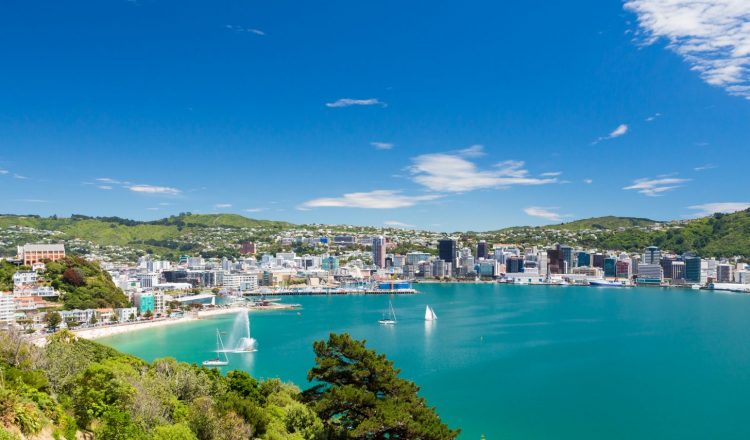간략한 역사
뉴질랜드는 지질학적 측면과 인류학적 측면에서 젋은 나라입니다. 실제로 뉴질랜드는 마지막으로 발견된 가장 큰 대륙일 뿐만 아니라 사람들이 살아갈만한 환경이 갖춰진 곳이었습니다.
마오리 정착; 1320-1350
이 땅에 가장 먼저 정착한 것은 마오리의 조상이었습니다. 그 정착민들은 1200년~1300년 경에 폴리네시아에서부터 왔을 것으로 추정합니다. 그들은 태평양을 탐험 도중 해류와 별을 보며 계속 항해하면서 뉴질랜드를 발견한 것으로 보입니다. 일부에 따르면 뉴질랜드를 발견한 것으로 인정받은 첫번째 항해자는 쿠페(Kupe)입니다.
최초의 유럽인; 1642년
네덜란드 – 뉴질랜드에 도착한 최초의 유럽인은 1642년 네덜란드 탐험가 아벨 태즈먼(Abel Tasman)이었습니다. 따라서 네덜란드 지도 제작자가 제일 처음으로 이 곳을 니우 제일란드(Nieuw Zeeland)라고 불렀기 때문에 마치 네덜란드어처럼 들리는 “뉴질랜드”라는 이름을 얻게 되었습니다.
영국과 프랑스 – 또다른 유럽인 제임스 쿡(James Cook) 선장이 뉴질랜드를 발견하기까지 127년이라는 오랜 시간이 걸렸습니다. 쿡 선장은 1769년에 이뤄진 세 번의 항해 중 그 첫 번째로 뉴질랜드에 도착했습니다. 이에 물꼬를 튼 유럽의 고래 사냥꾼들과 물개 사냥꾼들이 뉴질랜드에 정기적으로 드나들기 시작했고 곧 상인들이 들어왔습니다. 1830년대까지 영국 정부는 나라 안 무법 행위를 통제해야 함과 동시에 뉴질랜드를 잠재적 식민지로 간주하고 있던 프랑스를 선제해야 할 압력 속에 놓여있었습니다.
와이탕이 조약(Treaty of Waitangi) 체결; 1840년
1840년 2월 6일 와이탕이에서 뉴질랜드 최초의 총독인 윌리엄 홉슨(William Hobson)은 영국 왕실을 대표하여 마오리 부족장들을 모아 서명하도록 하였습니다. 이 조약은 지역 부족장들의 서명을 받기 위해 멀게는 포보(Foveaux) 해협으로 남쪽으로까지 전국을 돌며 체결되었습니다. 결국에는 500명 이상의 족장들이 이 조약에 서명하였으며, 현재 이는 와이탕이 조약으로 알려져 있습니다.
<뉴질랜드 전쟁; 1845-1872
유럽 이주민들이 유입됨에 따라 마오리 원주민들에게는 그들에게 토지를 팔라는 압박이 점차 고조되던 상태였습니다. 이로 인해 분쟁이 발생했고 마침내 1860년대 북섬에서 전쟁이 일어났습니다. 전쟁이 발발한 20년 동안은 물론 그 후에도 많은 원주민의 땅은 유럽인들에게 압수되거나 팔렸습니다.
여성 근로자를 위한 권리; 1893
1893년 뉴질랜드는 세계 최초로 모든 여성들에게 투표권을 부여했습니다. 노동자를 위한 국민 연금과 국영 주택 제도 역시 뉴질랜드에서 처음으로 시행됐습니다.
제1차 세계 대전과 안작(ANSACs)
수천 명의 뉴질랜드인들이 제1차 세계 대전으로 인해 해외로 파병되었으며 사망했습니다. 터키의 갈리폴리(Gallipoli)에 도착한 1915년은 뉴질랜드의 새로운 전환점이 됩니다. 갈리폴리 전투는 ANZAC(Australian and New Zealand Army Corps, 호주-뉴질랜드 군단)의 전통을 만들었고, 뉴질랜드군의 업적과 호주와의 특별한 관계에 대한 자부심입니다. 갈리폴리 상륙을 기념하는 Anzac Day는 매년 4월 25일 공휴일로 지정되어 있으며 그 날에는 점점 더 많은 사람들이 함께 참여하는 기념 의식이 치뤄집니다.
제2차 세계 대전
뉴질랜드 군대는 영국을 지원하기 위해 제2차 세계 대전에서 다시 해외로 나가 싸웠습니다. 그러나 싱가포르의 붕괴는 영국이 국가 안보를 보장해줄 것이란 뉴질랜드의 신뢰를 무너뜨렸습니다. 대부분의 뉴질랜드군은 이집트와 중동에서 발이 묶여 있었기 때문에 태평양 전쟁 중 일본으로부터 뉴질랜드를 보호한 것은 미국이었습니다.
무역과 문화적 다양성 확대
1973년 영국이 유럽 경제 공동체에 가입했을 무렵 뉴질랜드는 그 즉시 수출 무역을 다각화하기 시작했습니다. 뉴질랜드 농산물의 중요하고 확고한 시장을 잃는 것에 대한 타격 때문었습니다. 이 사건은 오히려 뉴질랜드의 시각이 넓어진 계기가 되어주었습니다. 뉴질랜드는 현재 농산물과 다른 많은 수출품을 광범위한 국가에 판매합니다. 문화적으로도 뉴질랜드는 더욱 다양해져 갔습니다. 특히 1980년대부터 다양한 민족들이 뉴질랜드에 정착할 수 있도록 장려하였으며, 이제 뉴질랜드는 예전보다 훨씬 더 다채로운 문화를 가진 나라입니다.

















































